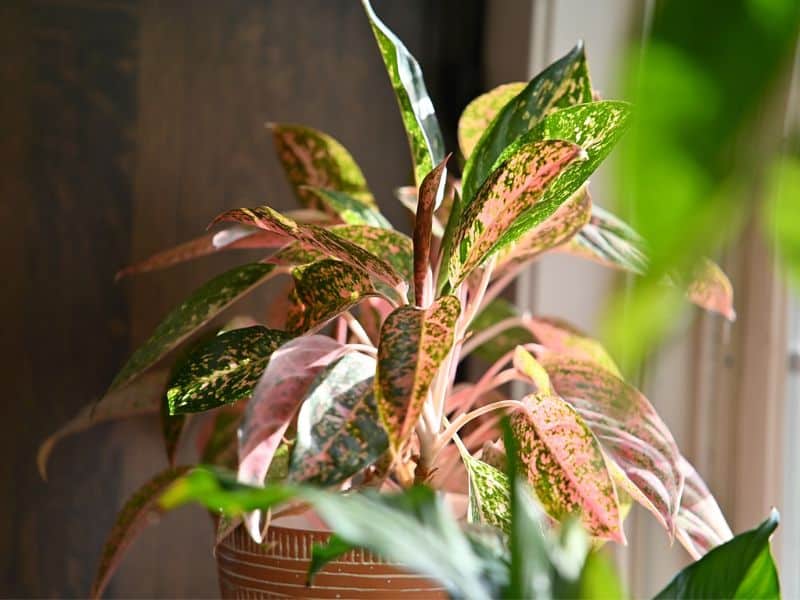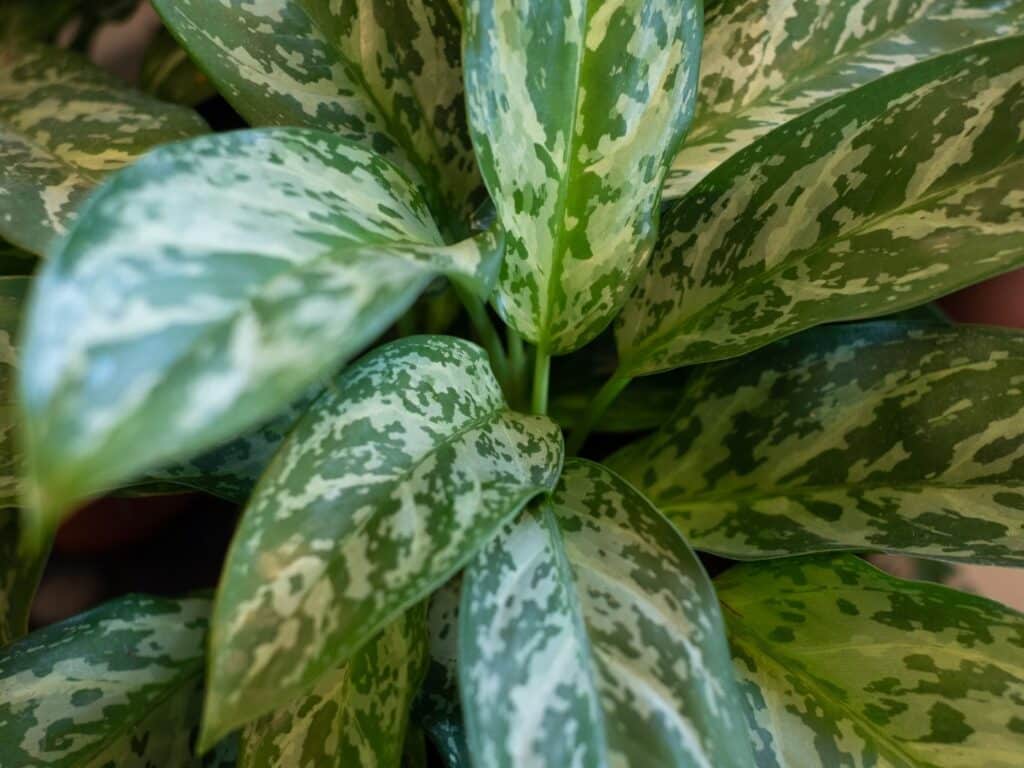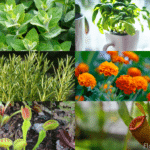Cultivating a lush, vibrant Chinese Evergreen begins with understanding the foundation of its growth: the soil. Often overlooked, the right soil mix is not just a minor detail; it’s a critical element that can determine the health and beauty of your plant. If you’ve found your Chinese Evergreen struggling despite your best efforts, the issue may well lie beneath the surface, in the very soil it calls home.
Selecting the perfect soil for your Chinese Evergreen doesn’t have to be a daunting task. With the right knowledge and a few Chinese Evergreen care tips, you can create an environment that allows your plant to thrive, not just survive.
This article will guide you through the essentials of Chinese Evergreen soil, from understanding its unique needs to crafting the ideal mix that will usher in a new era of growth and vitality for your beloved green companion.
Understanding Chinese Evergreen Soil Needs
The Importance of Soil Type for Chinese Evergreens
Choosing the right soil for your Chinese Evergreen isn’t just a good idea—it’s vital. These plants are pretty forgiving, but they do have their preferences. Think of them like a cat that will grace you with affection but only on its terms.
The correct soil type acts as a comfortable bed for your plant, supporting its roots and ensuring a steady supply of nutrients. If the soil is too dense or doesn’t drain well, your plant’s roots may well as well be trying to breathe underwater. Not ideal, right?
Key Soil Properties for Healthy Growth
The perfect soil mix for Chinese Evergreens strikes a balance between holding moisture and draining excess water. Aim for a lightweight, airy mix—think of it as making a fluffy cake that roots would love to dive into.
A mix of two parts peat moss or coco coir, one part perlite, and one part potting soil usually hits the mark. This combo provides the drainage and aeration Chinese Evergreens crave. Remember, the goal is to mimic their natural, tropical habitat as closely as possible without turning your living room into a jungle.
Choosing the Right Soil Mix
Selecting the right soil mix for your Chinese Evergreen is critical. This choice impacts the plant’s health, growth, and beauty. By choosing well, you give your plant the best chance to thrive.
Ready-Made Chinese Evergreen Soil Mixes
If mixing soil isn’t your thing, no worries! There are ready-made options available. These mixes are specially formulated for Chinese Evergreens and aim to replicate their natural habitat. They usually contain a blend of potting soil, peat moss or coco coir, and perlite.
This composition ensures good aeration and drainage, preventing root rot. Just head to your local garden center or check online retailers to find a mix that’s right for your green buddy.
DIY Soil Mix Recipes for Chinese Evergreens
Prefer a hands-on approach? Creating your own soil mix can be surprisingly simple. Start with two parts of potting soil as your base. This provides structure. Then, add one part of peat moss or coco coir. This will help retain moisture without getting soggy.
Finally, mix in one part of perlite to promote drainage. This DIY mix strikes a balance, offering your Chinese Evergreen the conditions it needs to prosper. Remember, the goal is to mimic the tropical environment they originate from, focusing on moisture and breathability.
Amendments to Enhance Chinese Evergreen Soil

Organic Matter Addition
Adding organic matter to your Chinese Evergreen’s soil is like giving it a multi-vitamin. Composted bark or leaf mold elevates the soil’s ability to retain moisture while still allowing excess water to escape, mimicking the natural, humid environments these plants thrive in.
A handful of compost or worm castings introduces beneficial microorganisms, improving soil health, which translates directly to healthier plant growth. Keep additions moderate; a little goes a long way.
Drainage and Aeration Enhancements
If your plant’s soil is more waterlogged than a sponge, it’s time for an intervention. Incorporating perlite or pumice into the mix increases drainage and aeration, preventing roots from becoming waterlogged.
Think of these amendments as creating tiny air pockets within the soil, allowing roots to breathe easier and water to move through more efficiently. A 1:1:1 ratio of potting soil, perlite, and your chosen organic matter usually hits the sweet spot for Chinese Evergreens, offering them the airy, well-drained foundation they need to flourish.
Common Soil-Related Issues in Chinese Evergreens
Over-Watering and Root Rot
Root rot is a real party pooper for your Chinese Evergreens, turning your plant’s root system into a slimy mess. This usually kicks off with over-watering. Your plant’s roots, much like you at a crowded party, need space to breathe.
If they’re constantly soaked, they’re going to suffer. The trick is to maintain a soil mix that’s like a good sponge—holds moisture but drains enough to avoid waterlogging. Watch out for soft, yellow leaves; they’re your plant yelling, “Help, I’m drowning!”
Nutrient Deficiencies and Toxicities
Just as you may well feel a bit off after skipping your veggies, Chinese Evergreens will let you know when they’re missing essential nutrients. Signs like yellowing leaves or stunted growth can point to a deficiency in the soil’s nutrient mix.
However, there’s such a thing as too much of a good thing. Excessive fertilization can lead to toxicity, where leaves may well show browning tips or margins and poor overall health. A balanced diet, consisting of a well-mixed soil with occasional, moderate fertilization, keeps your plant happy and healthy. Remember, moderation is key, both in snacks and plant care.
Repotting Chinese Evergreens
Signs It’s Time to Repot
You may well notice your Chinese Evergreen starting to look a bit cramped, a clear sign it’s time for a change of scenery. Roots peeking out of drainage holes or forming a dense mat at the bottom of the pot signal that your plant is feeling a bit claustrophobic.
Additionally, if your plant begins to dry out faster than usual or shows signs of stunted growth, these are indicators that the current pot may well be holding it back. It’s like your evergreen is telling you, “Hey, I could use a little more legroom here!”
Step-by-Step Guide to Repotting
First things first, select a new pot that’s one size larger than the current one to give your plant a bit more space to stretch its roots. You don’t want to go too big, or you risk water not being absorbed properly, leading to soggy soil conditions that can spell trouble.
Step 1: Prepare the new pot by filling it with a third of the recommended soil mix, ensuring it’s well-aerated and drains beautifully. Think of this as laying down a comfy new mattress for your plant.
Step 2: Gently remove the Chinese Evergreen from its current home. A little tip: if it’s being stubborn, tap the pot’s edges to loosen the grip before trying to lift the plant out.
Step 3: Take a moment to inspect the roots. If you see any that are brown or mushy, it’s time to give them a trim. Healthy roots are your goal, so anything that doesn’t look up to par needs to go.
Step 4: Place your plant in the new pot and fill in the gaps with more soil mix. The soil should support the plant but not be packed too tightly. You’re aiming for a cozy fit, not a tight squeeze.
Step 5: Give your newly potted Chinese Evergreen a good watering and place it in a location that gets indirect light. This is like a welcome drink after moving into a new house. It’s your way of saying, “Welcome home!”
Repotting doesn’t have to be a chore. Think of it as a way to refresh your plant’s living conditions, much like rearranging your room for a new look. With the right approach, your Chinese Evergreen will thrive, showcasing lush, vibrant leaves that make all the effort worthwhile.
Maintenance and Care Tips
Regular Soil Monitoring
Keeping an eye on the Chinese Evergreen’s soil condition is key. Over time, soil can compact, reducing its effectiveness in draining water and allowing roots to breathe. Every few weeks, take a moment to check the soil moisture with your finger. This is especially important for Chinese evergreen watering, as they prefer to dry out slightly between waterings.
If it feels hard or looks crusty, it may well be time to aerate it gently with a fork or even consider repotting. Also, observe the color and smell of the soil. A healthy soil should have a rich, earthy odor and color. If it starts to smell foul or looks unusually pale, it could be a sign of over-watering or bacterial growth.
When to Fertilize Your Chinese Evergreen
Fertilization is vital for your Chinese Evergreen’s growth, but there’s a fine line between just right and too much. The best times for feeding your plant are during the growing seasons, spring and summer.
Opt for a balanced, water-soluble fertilizer, diluted to half the recommended strength, once a month. However, during the fall and winter, your plant’s growth slows down, and it requires less food.
Hence, you can reduce fertilizing to once every two months. Remember, over-fertilizing can lead to salt build-up, which may well harm the plant. So, if you notice the tips of the leaves turning brown, it’s a signal to ease up on the fertilizer.
Frequently Asked Questions
What is the best soil mix for Chinese Evergreen plants?
The best soil mix for Chinese Evergreens consists of peat moss or coco coir, perlite, and potting soil, complemented with organic matter like composted bark or leaf mold. This blend ensures proper drainage and aeration, essential for the plant’s health.
How often should Chinese evergreens be repotted?
Chinese Evergreens should be repotted when they show signs of outgrowing their current pot, such as roots growing through the drainage holes. This typically occurs every 2-3 years but may vary depending on the growth rate and conditions.
What are common soil-related issues for Chinese Evergreens?
Common soil-related issues include over-watering, leading to root rot, nutrient deficiencies affecting plant growth, and toxicities from excess fertilization. Proper soil mix and care practices can prevent these problems.
How can I tell if my Chinese Evergreen needs repotting?
Signs that your Chinese Evergreen needs repotting include roots protruding from the pot’s drainage holes, slowed growth, and the soil drying out faster than usual. These indicate the plant has outgrown its current container.
What is the importance of monitoring soil condition for Chinese Evergreens?
Monitoring the soil condition is crucial for detecting issues like compaction, over-watering, or bacterial growth. It helps ensure the soil maintains a balance between moisture retention and drainage, essential for root health and plant vitality.
How should I fertilize my Chinese Evergreen plant?
Fertilize your Chinese Evergreen sparingly, using a balanced fertilizer during the growing seasons of spring and summer. Reduce fertilization frequency in fall and winter to prevent over-fertilization and potential harm to the plant.
Image by jaanall/depositphotos







